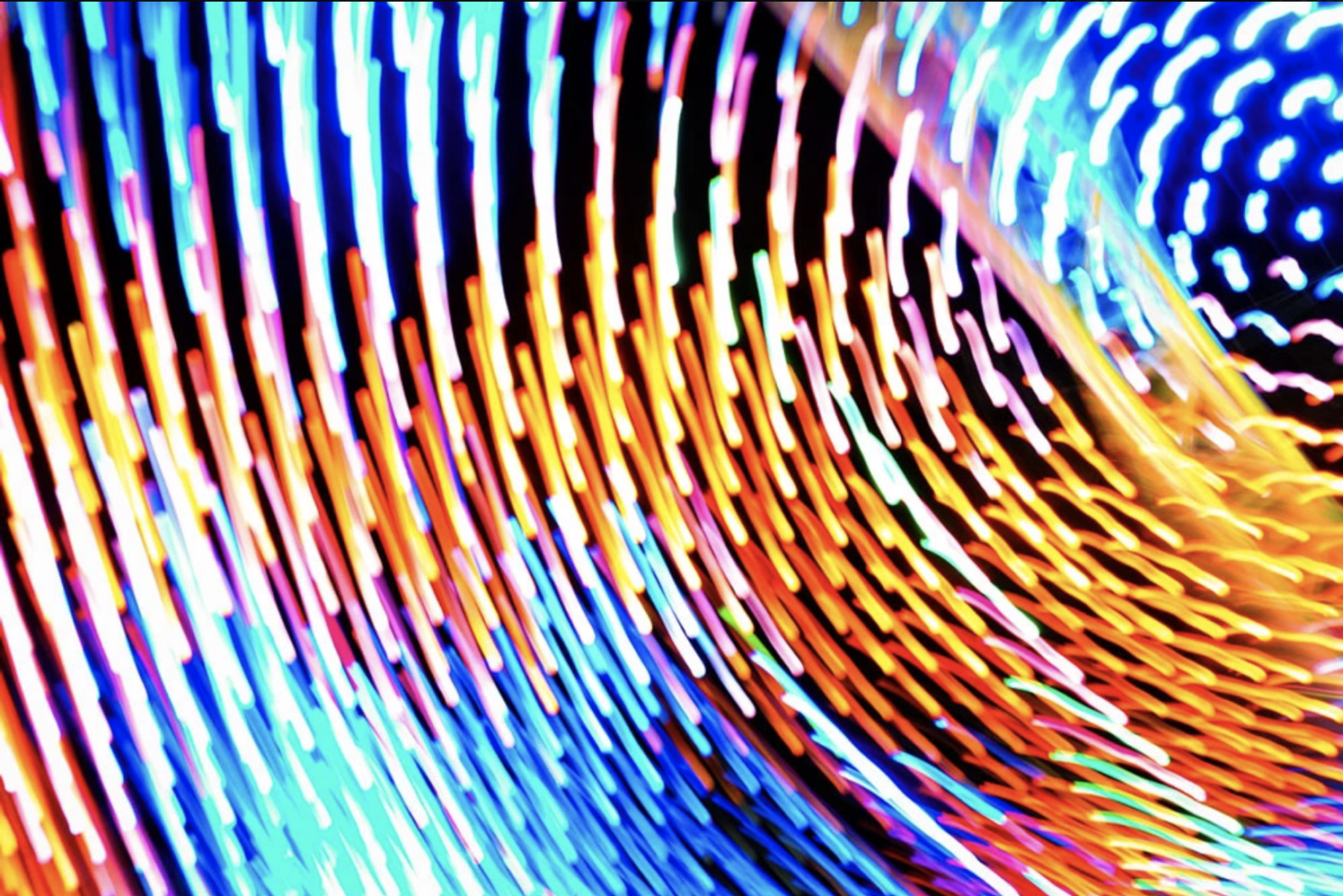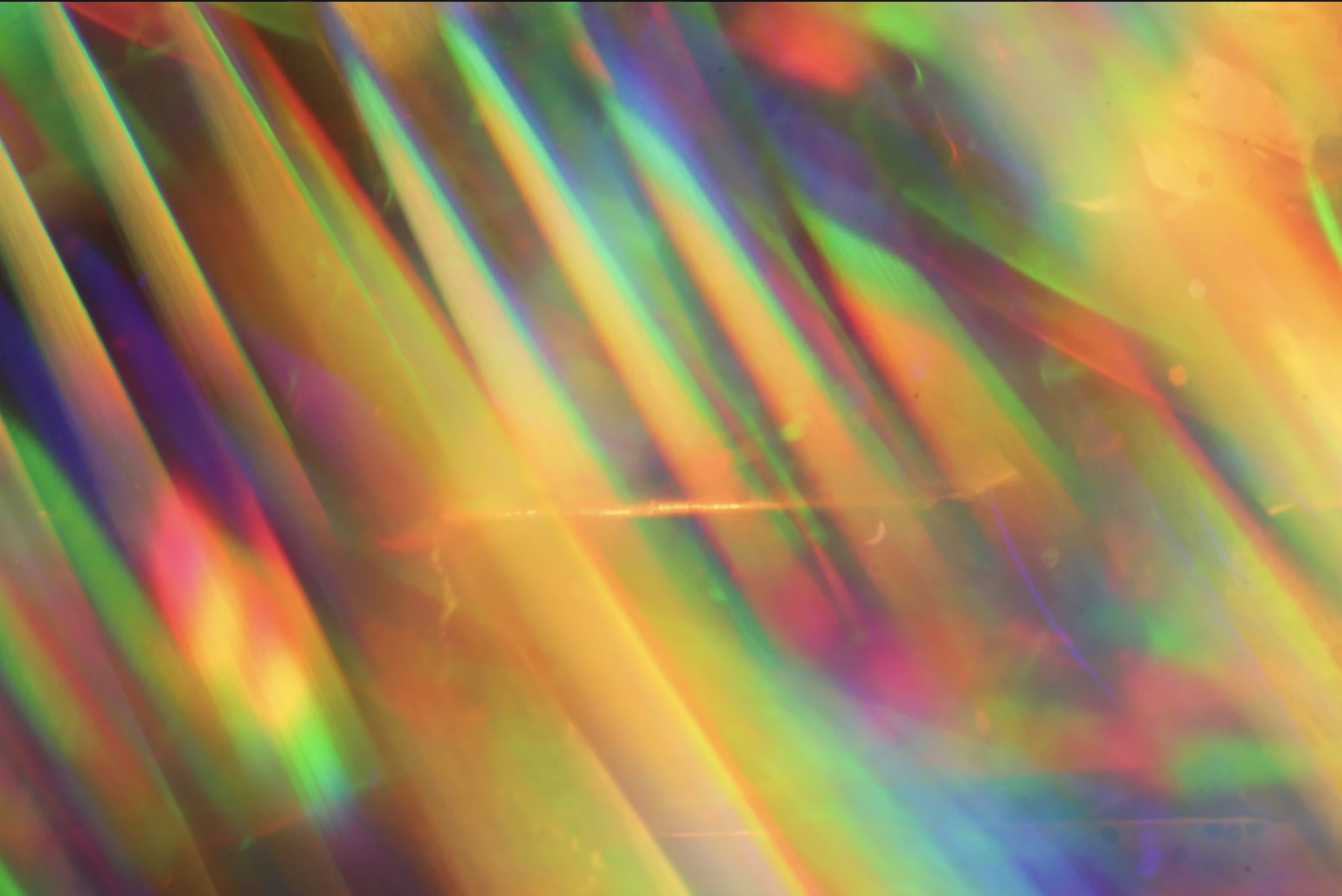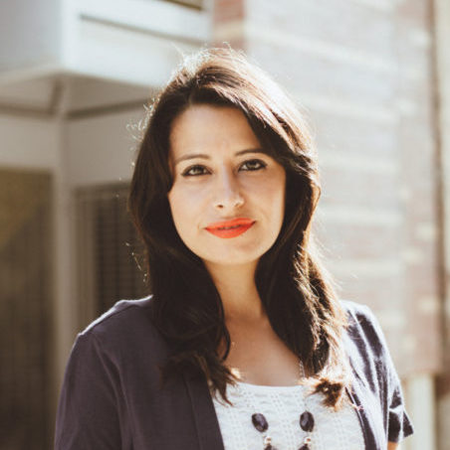March 2020 - Iveth Bueno
Iveth Bueno
Lead Lighter & Compositing Artist
Lead Lighter & Compositing Artist
Growing up in Mexico, a country full of color in its folklore, would inspire Iveth Bueno to focus in the arts. Coming from a family of scientists and designers would motivate her to combine her interests with technology, resulting in a career in CG lighting and compositing for VFX and animation. For over 8 years, she has worked in the animation industry for companies such as Disney, DreamWorks and Rainmaker. Working as a lighting artist for Zootopia, Trolls, Boss Baby, and other movies.
In 2017, fascinated by diffracted lighting phenomena and beautifully designed urban lamps, Iveth Bueno decided to explore abstract photography with “The Optical Forest” project. Her goal is to evoke an emotion in the viewer through color and form, by combining light physics, old special effects techniques and hand-crafted optical tools.
Hi Iveth, thank you so much for participating in this month’s LXiA Member Spotlight! Please, tell us about yourself.
My name is Iveth Bueno. I’m a Mexican lighting and compositing artist with over 10 years of experience. I have worked in studios in Mexico, the U.S, and Canada and contributed to animated feature projects such as the Mexican animation movie: Un Gallo con Muchos Huevos; Disney’s Academy award winner Zootopia; and DreamWorks’s Trolls and Trolls World Tour, Boss Baby and How to Train your Dragon 3: The Hidden World. I currently live and work in the U.S. as a lead lighter.
“I always looked for the next thing to do as soon as I knew the previous project was finishing. I also like to ask for feedback when I’m working in a shot or image; you can learn so much from this and your work always ends up looking better.”
Before working as a lighting and compositing artist you worked as a 3D generalist. What sort of 3D work did you do and how did you come to realize that the path to lighting and compositing was right for you?
While studying, I got my first job in the industry as a director’s assistant for a small animation studio. Because it was small and we were only around 15 people there were a lot of opportunities in all the areas, so I tried to help with everything I could. I tried a little bit of everything while working in medical projects and small commercials and advertisements.
Some of my teachers were working at the same studio, and they saw the potential I had as a lighting and compositing artist. I was really fortunate to have their guidance and encouragement. I have always liked photography, and I remember during middle school I would create small gag projects compositing my friends onto movie posters; or I would try to restore old photographs and add some lighting to them. But it was eventually thanks to my teachers in this first job, who would steer a lot of projects and opportunities in that area my way, helping me to stay on that path.

“A New Beginning”
How was it working in Mexican studios compared to the ones in the U.S.?
I always worked in small studios in Mexico. In Mexico, even if you are a lighter and compositor, you wind up doing everything; because you must finish the project and the projects are always due yesterday. The lack of resources forces you to develop problem solving skills. Although there is still a long road ahead for the industry in Mexico, the talent that you can find there is amazing. The quality is there, but there may not be the resources to keep that talent local. In the U.S., we have the resources and many studios have significantly more history and experience, and can provide more opportunities for new artists in the field. Working at studios in the U.S. can also help you to focus on your chosen discipline with less demands to maintain generalist skills. Here I’ve been able to focus on lighting and compositing and grow more strongly on that specific path.
You have so much experience as an in-studio professional. Can you tell us about how you developed into the artist you are today?
I never stopped working hard. I always looked for the next thing to do as soon as I knew the previous project was finishing. I also like to ask for feedback when I’m working in a shot or image; you can learn so much from this and your work always ends up looking better. However I try to combine my 3D day-job with other artistic activities. So I spend my spare time either visiting art museums, creating projects involving other types of crafts, like my photography projects, or taking miscellaneous classes. I believe all these can help you be a better artist.

“Prismatic Singularity”
We have several members who come from many different backgrounds outside of the states who are working hard to be hired by an animation studio here in the U.S. What advice do you have for those people trying to break in?
Create opportunities of your own. Go to conferences like Siggraph, CTN, or events like the ones LatinX provides. Many countries also have their own local animation conferences you can visit and assist. These are great places to make contacts; often, recruiters from bigger studios will be there. Introduce yourself and talk to everyone. There are also opportunities in these event to show your work and get feedback. This is great because you can get an idea on what they are looking for and apply it to your work, as well as making a contact first hand.
However, look for opportunities everywhere, not only here in the U.S. A lot of younger artists want to break in at bigger studios as their first job and they get frustrated when that doesn’t happen. Every opportunity will make you grow and will open the doors to newer and better ones, which eventually will bring you to where you want to be. Everybody has a different path; for me, it took seven years to get to a big studio. But I’m grateful, and I enjoyed working at every studio I worked at.
“Do it for yourself and no one else. But you’ll need to work hard. Nothing comes for free, so just keep going.”
We’re always thrilled to see more and more Latinas in the animation and film industry and are very aware of the need for more diversity and representation in studios. As both a Latina and an artist, what is the story you hope to tell future generations?
You can do it, it is possible. I believe these words are pretty strong. Working in animation is a rocky and non-easy path but it is definitely something you can do. During my career I heard a lot of negative statements that were meant to make me feel bad, or communicate that I wasn’t good enough for the task. But that didn’t stop me and I’m glad I kept going, otherwise I wouldn’t be where I am today. Do it for yourself and no one else. But you’ll need to work hard. Nothing comes for free, so just keep going.

“Impressionistic”
Your photography project, The Optical Forest, is beautiful for exploring diffracted light as an art form of its own. Every photograph looks like a painting! How did this project come to be?
It was born during a downtime. Every now and then we get some free time between projects so these moments are perfect to explore other things. A few months before this happened we had a scientist visiting the studio to give us a talk about physics and lighting. I remember quite well he gave us some diffraction paper glasses. When in use, these would show you how the light diffracts. I was amazed by this! When I finally had the free time I decided to combine this phenomena with photography in a more artistic way and produce the series of photographs you see at The Optical Forest. It has also been great to combine manual crafts in order to achieve these pictures.
Thank you for interviewing with us, Iveth!
Iveth invites you all to see her work at an art exhibit she is currently participating in titled New To Neon at the Museum of Neon Art in Glendale, CA running from February 1st through May 24th. Visit https://www.neonmona.org/myportfolio/new-to-neon/ for more info!

Follow Iveth Bueno on social media!

